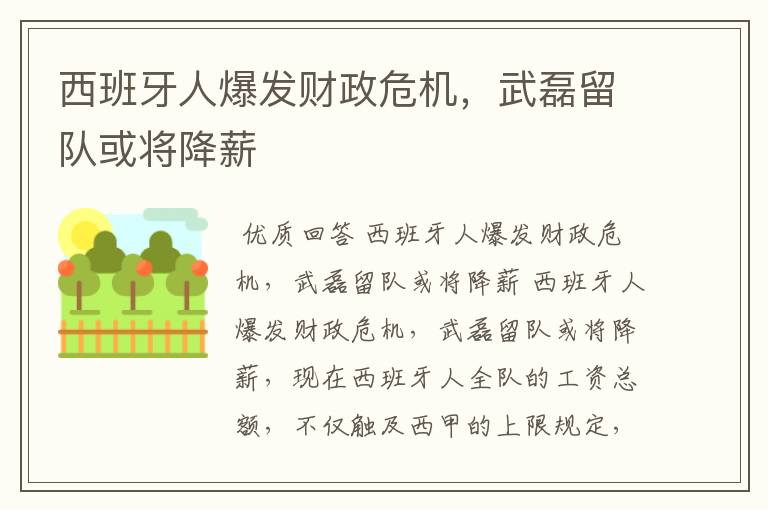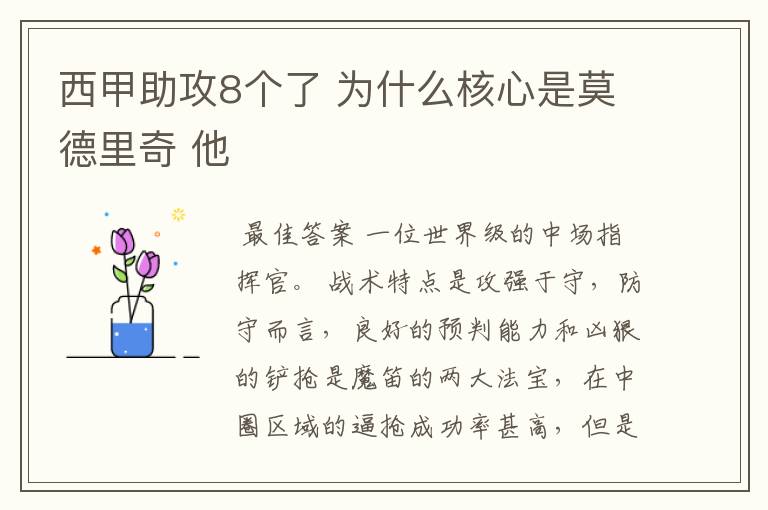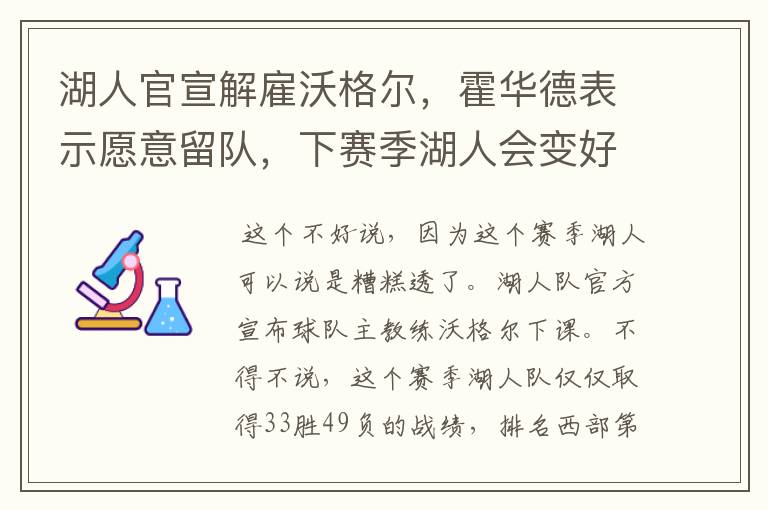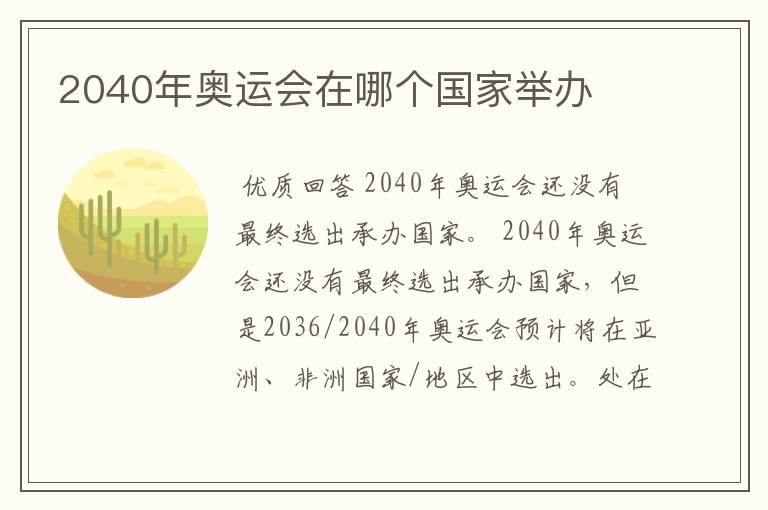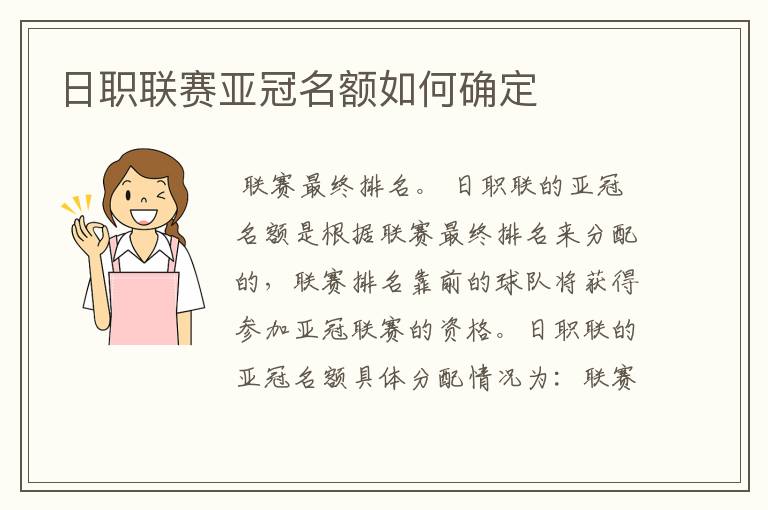切尔西官网
今天运困体育就给我们广大朋友来聊聊切尔西官网,希望能帮助到您找到想要的答案。
切尔西正品球衣生产地在哪?
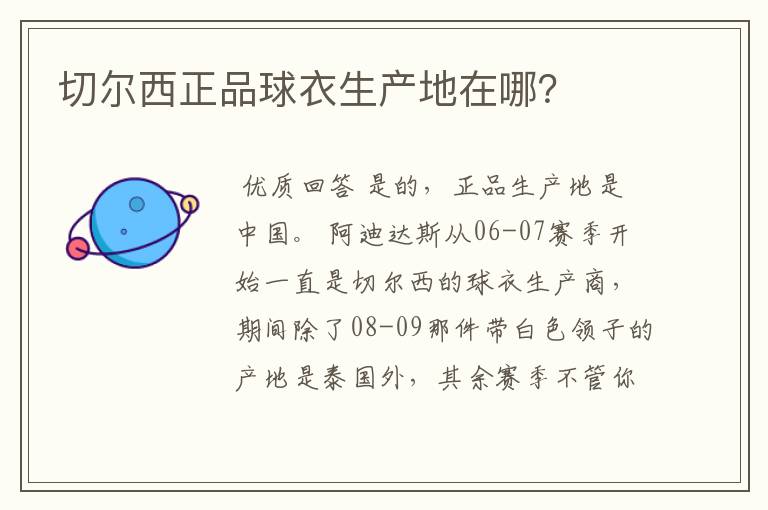
优质回答是的,正品生产地是中国。
阿迪达斯从06-07赛季开始一直是切尔西的球衣生产商,期间除了08-09那件带白色领子的产地是泰国外,其余赛季不管你买的是球员版(Climacool)还是球员版(Formotion、Techfit)都是中国产的。
我是切尔西死忠,搜集了1994-2013年来的所有切尔西正版主场球衣,阿迪达斯以前是恩宝生产的球衣,恩宝2000年以后也是中国产,2000年前则是英国产。
切尔西怎么了、
优质回答切尔西本周有两件大事,第一就是主场0-3爆冷输给近24个客场仅1胜的桑德兰,第二就是毫无征兆的宣布与功勋助教威尔金斯解约,这两件事看似毫无关系,但其中也暗藏着某种必然的关联。
本周中,切尔西官方宣布不再与助理教练威尔金斯续约,不仅如此,双方的合作关系还“马上结束”。据英国媒体报道称,当时威尔金斯正在跟安切洛蒂观看一场预备队赛事,中场休息时他接到球队CEO古尔利一个电话,而在前往后者的办公室后,威尔金斯就再也没有回到安切洛蒂身边,切尔西官网随后证实,球队已经正式与威尔金斯解约。
在英国媒体看来,切尔西之所以如此无情无外乎两个原因,一是威尔金斯作为安切洛蒂与球员沟通的中间人,其历史使命已经宣告完成,第二就是他35万镑的年薪太高,虽然特里和兰帕德3个星期的薪水就要高于威尔金斯的年薪,但在球队CEO古尔利看来,一个“翻译”却拿着35万镑的年薪,这显然不符合老板阿布要求的精兵简政、开源节流的俱乐部施政方针,于是解约也就在情理之中。
当然,切尔西球员断不至于为了威尔金斯而故意输球,但发生在威尔金斯身上这件事,今年夏天同样发生在很多老将身上,合同到期的巴拉克、乔-科尔、德科和贝莱蒂都没能得到续约合同,甚至就连葡萄牙国脚卡瓦略也被800万欧元卖到皇马。这几位老将的走人虽然让切尔西省下了不菲的年薪,但球队的阵容厚度却因此大打折扣,另外切尔西在转会市场只引进了拉米雷斯和贝纳永两人,后者还因重伤而要长期休养,这无疑会让切尔西的战斗力大大降低。
本赛季切尔西与曼城相遇时,媒体赛前都在大肆鼓噪两大暴发户之间的争斗,但残酷的现实却是,曼城的替补席上阿德巴约、维埃拉、亚当-约翰逊、莱斯科特和吉文等大将,而切尔西却派上斯图里奇、卡库塔、麦凯克伦、范安霍尔特4员小将,费雷拉和特恩布尔也是绝对替补。那场比赛切尔西0-1不敌曼城,赛后《卫报》感慨不已:“看看两队的替补席,切尔西的阵容厚度明显要弱于曼城,输球也在情理之中。”
而在本场比赛中,当特里和阿莱士两人因伤缺阵时,切尔西竟然在后防线捉襟见肘,安切洛蒂只能让费雷拉客串中后卫,葡萄牙人和伊万诺维奇的中卫组合缺乏默契,配合屡屡出现失误,奥诺哈能够带球直入禁区,吉安进球前桑德兰的前场配合如绣花般巧妙,这些都是切尔西后防线配合生疏的证据。看到这一幕,不知安切洛蒂和贵宾席上的阿布是否会思念卡瓦略,32岁的葡萄牙人已经在皇马打了13场比赛贡献2球,他可绝不是被人质疑尚能饭否的老廉颇。
考虑到阿布这些年来为切尔西投入的巨资,同时欧足联也将在2012-13赛季推出“财务公平竞争原则”,因此蓝军的精兵简政本无可厚非,但球队高层对待这一问题的做法恐怕有些过头。诚然,与老将们解约的确让切尔西的帐面轻松了很多,但在这样关键的比赛中,麦凯克伦和卡库塔这样的小将是很难指望上的,而本场比赛的输球或许只是一个开端,假如切尔西继续奉行毫无底线的精兵简政,当一批批老将和功勋之臣离开斯坦福桥时,谁又能给球队的冠军锦标带来保证?
谁能给个关于切尔西的英文介绍.?
优质回答Part 1 : 1905 - 1959
Introduction: Chelsea — A History of the First 100 Years
Chelsea Football Club has been good at celebrating special anniversaries. The year 2005 saw us reach the major milestone of 100 years-old. What better way was there to mark the centenary than by becoming champions of England for the second time in our existence
Our golden jubilee had been similarly honoured. The club won silverware in the 1960s, the 70s, the 90s and at the turn of the new millennium, but 1955 was the year we finished above all other teams in the League for the first time.
It was also Chelsea’s earliest major trophy. The first five decades had seen the club develop into an integral part of sporting life in England’s capital city with famous players and a large, often full stadium.
Chelsea were popular, but achievement fell a long way short of that now enjoyed by José Mourinho’s team; the team that began the second 100 years of Chelsea history as the best in the land and the biggest football story throughout the world.
--------------------------------------------------------------------------------
A New Team for a New Stadium — the Birth of the Blues
Even if trophy success proved elusive in the first 50 years, the club had been set up for the big time from the moment Henry Augustus Mears had a change of heart one Sunday morning in the autumn of 1904.
Of all the decisions that have shaped the history of Chelsea FC, there can none more crucial than the one this Edwardian businessman made that particular day.
Gus Mears was an enthusiast for a sport that had taken northern Britain by storm but had yet to take off in the capital in quite the same way. London at the turn of the century failed to provide a single team to the Football League First Division.
Mears had spotted the potential for a football club to play at an old athletics ground at Stamford Bridge, an open piece of land in west London. It was a ground he planned to massively redevelop.
But unforeseen problems had followed, as did a lucrative offer for the land. Mears was on the verge of selling up and abandoning his sporting dream.
Colleague Frederick Parker, an enthusiastic supporter of the football stadium project attempted to dissuade him but on the fateful Sunday morning, Parker was told he was wasting his time.
As the two walked on, without warning Mears’ dog bit Parker, drawing blood and causing great pain, but only an amused reaction from Parker.
“You took that bite damn well,” Mears announced before telling his accomplice he would now trust his judgement over others. “Meet me here at nine tomorrow and we’ll get busy,” he said. Stamford Bridge was alive once more.
Not that Chelsea FC was in the original plan. The finest sports stadium in London seemed a little out of place on the edge of well-heeled and arty Chelsea but as history shows, Mears had chosen well. The proximity to the vibrant centre of town made it perfect as a new venue for football.
Due to financial disagreement, nearby Fulham Football Club, already in existence declined an offer to abandon the less grand Craven Cottage and move in. So in contrast to the history of so many clubs, Mears decided to build a team for a stadium, rather than the other way round.
On March 14th 1905, a meeting convened opposite the stadium in a pub now called The Butcher’s Hook. One item on the agenda was a name for the new club. Stamford Bridge FC, Kensington FC and intriguingly, London FC were all rejected. Chelsea FC was what it was to be — and the story had begun.
John Tait Robertson, a Scottish international was the first player/manager and a squad of respected players was signed, providing a league could be found to compete in.
The Southern League was the natural choice for our location but they were unwelcoming to these upstarts. Undaunted, Chelsea simply set our sights higher and went straight for the northern-dominated Football League.
On May 29th 1905, the Football League AGM dramatically elected us to the Second Division. Parker again proved persuasive as we became the first club ever to make the League without having kicked a ball.
--------------------------------------------------------------------------------
The First Decade and a Cup Final
The first competitive game was on September 2nd 1905, a 1-0 defeat away at Stockport. Chelsea didn’t take long to prove worthy of the League’s faith. The crowds flocked to Stamford Bridge with 67,000 recorded against Manchester United on Good Friday of that first season. At the end of the second season, we were promoted to Division One.
Those early days saw Stamford Bridge populated by spectators rather than passionate fans, attracted by what was to become a Chelsea tradition for signing star names.
Chelsea’s first ever goalkeeper cut one of the most distinctive figures in the game. An England international weighing over 22 stone, Willie ‘Fatty’ Foulke was an immense man with a deep-loathing for both centre-forwards and referees.
In the second year came George Hilsdon, nicknamed ‘Gatling Gun’ after a famous early design of machine gun. He was the first in a long-line of centre-forwards to be worshipped by the Stamford Bridge crowd. The 107 goals Hilsdon scored in six seasons led to a weather vane being modelled on him, still a feature of the stadium today.
His partner in attack was Jimmy Windridge, scorer of the first Chelsea hat-trick in the club’s opening home game — a 5-1 defeat of Hull City.
Nils Middelboe, known as ‘The Great Dane’ was our first foreign player and was immensely popular during eight years at the club.
Vivian Woodward was the greatest amateur centre-forward of his day and together with Hilsdon and Windridge, gave Chelsea three England international attackers. If that wasn’t enough strike power, there was Bob Whittingham, scorer of 80 goals in just 129 appearances.
With such firepower, gates of 50,000 were not unheard of in that pre-World War One decade although the results were not always to the crowd’s liking.
One relegation back to Division Two was suffered in that time, followed quickly by promotion but eighth place in Division One was the highest in our first ten years of existence.
The First World War cast a dark shadow over football but during the opening months of the conflict, Chelsea marked our first decade by reaching our first FA Cup Final.
The 1915 Final was held in Manchester at Old Trafford - virtually impossible for Chelsea fans to reach under the circumstances. The opposition, Sheffield United, were more local and the considerable number of military uniforms visible amongst the largely Yorkshire crowd led to the game being dubbed ‘The Khaki Final’. With the odds stacked against us, Chelsea lost 3-0.
--------------------------------------------------------------------------------
Between the Wars - Big Names and Big Crowds
The FA Cup would continue to provide the major moments for both Chelsea and Stamford Bridge.
Although he had passed away in 1912, Mears’ original vision for his stadium was realised when three FA Cup Finals were played there in the years immediately prior to the opening of Wembley Stadium in 1923.
Chelsea very nearly reached the 1920 occasion, losing 3-1 to Aston Villa at the semi-final stage.
Centre-forward that day was Jack Cock, the Chelsea glamour boy of that era. Decorated during the war, as well as stylish goalscoring, he did a neat line in singing on stage of an evening.
Emerging from the horrors of war to face economic depression, Londoners wanted distraction and entertainment in their limited spare time. Crowd figures at the Bridge continued to rise, culminating in an October Saturday in 1935 when 82,905 crammed into the curving terraces for a league game against Arsenal - the highest official attendance ever recorded at the ground. It remains the biggest attendance in English league football too.
It was little wonder this London derby proved such a draw. Arsenal had built London’s first great side — winning four out of five championships in the early 30s.
The pressure had long been on Chelsea to compete with our local rivals. Having never been shy of spending cash since our birth, at the start of the 1930s the club splashed out in style. Continuing strong links with north of the border - three Scottish international forwards were bought for large sums. Alec Cheyne, Alec Jackson and Hughie Gallacher.
Small in stature, Gallacher was the biggest name in the game. Chelsea prised him away from Newcastle with a club record £10,000 fee.
The Stamford Bridge spectators, who had recently emerged from watching six years of Second Division football, our longest spell out of the top flight, caught their first glimpse of the new sparkling forward line in a 6-2 win over Man United. Hopes were sky high but expectations were not matched.
By Christmas both Birmingham and Derby had found the Chelsea net six times. Arsenal scored five at the Bridge. The pattern had been set for lower table finishes. It was a big disappointment.
An FA Cup run in 1932 brightened the mood and Chelsea found ourselves in our third semi-final. Ironically for Gallacher it was against Newcastle. The wee man scored past his former team but Chelsea lost 2-1. The next season we finished 18th out of 22 teams.
Two redoubtable servants — Jack Harrow and then Tommy Law ensured quarter-of-a-century of quality at left-back, but it wasn’t enough to tip the balance.
Some of the stars missed too many training sessions and misfired in too many matches. It was a side high on ego but low on team spirit. While Gallacher’s 81 goals in 144 games is was a good return, he is remembered just as much for his indiscipline and volatile temper. After just over four seasons, he left for the north once more.
As London drifted to war again, Chelsea did little to lift the spirits of our fans. It often took England international goalkeeper Vic Woodley to prevent relegation being added to the worries.
--------------------------------------------------------------------------------
The 1940s, the 1950s and a Famous First Place
At the end of the World War Two, Stamford Bridge had survived the bombing and just six months after Victory in Europe was declared, the 40 year-old stadium hosted what remains one of its most momentous occasions — Dynamo Day.
London was desperate to see top level football once more and there were few bigger draws than the mystery of a team travelling over from war-time allies Russia. Moscow Dynamo opened a tour of Britain against Chelsea and it seemed the whole city came to watch.
The turnstiles were closed with a recorded 74,496 having passed through but the shut gates proved no obstacle to the football-starved masses. Just how many gained illegal entry will never be known - although estimates put the total crowd at 100,000.
Such were the scenes around the pitch that the 3-3 result seems incidental but scoring Chelsea’s third was a new centre-forward by the name of Tommy Lawton. Fast of foot, powerful of shot and a legend at heading for goal, Lawton was England’s number nine, keeping Chelsea firmly in the spotlight.
In his first full season he broke a club record with 26 goals in 34 First Division games, yet the team finished 15th. By the summer, cracks between player and club had appeared. After an all-too-brief two years, he was gone.
Two months after Lawton’s transfer, Chelsea spent just over half of the British record £20,000 they had received on a new striker. Again Newcastle were raided, this time for Roy Bentley.
Once again devastating in the air, Bentley was more mobile than his predecessor — and more long-lasting. In each of his eight full seasons at the Bridge he was club top scorer.
Chelsea set-off on the FA Cup trail. In 1950 and 1952, Arsenal were played in the semi-final. Both ties went to replays and both were lost.
Between those two seasons, relegation was avoided by a mere 0.044 of a goal. Chelsea was a club ripe for change.
Manager Billy Birrell retired after the second disappointment against Arsenal so in May 1952, Chelsea appointed Ted Drake.
Drake had been a top class centre-forward for both Arsenal and England and had championship medals to his name. His managerial reputation had been growing at Reading.
He would sweep away the last vestiges of a more amateur age from Chelsea, declaring: “Too many people come to Stamford Bridge to see a football match instead of cheering Chelsea. For years now the players must have been thoroughly sick of all the music-hall publicity. Let’s have people eating, sleeping and drinking Chelsea.”
Drake removed the Chelsea Pensioner from the club’s badge and banished ‘The Pensioners’ nickname that had been bestowed soon after our formation.
He abandoned the manager’s office, donned a tracksuit and involved himself in training. He expanded a youth and scouting programme began under Birrell, a move that was to pay dividends for future managers.
Progress was slow at first but Drake was using his knowledge of the lower divisions to sign a different sort of Chelsea player - value-for-money performers who like the club, were hungry for their first silverware.
Around players he had inherited - Bentley, Ken Armstrong, long-serving captain John Harris, Stan Willemse and Eric Parsons — Drake built Chelsea’s first complete team.
John McNicholl, Les Stubbs, Stan Wicks and Peter Sillett all arrived from he lower leagues. Crewe’s Frank Blunstone was an 18 year-old star-in-the-making who was a target for many big clubs. Drake even brought in amateur club players — Derek Saunders, Jim Lewis and Seamus O’Connell.
O’Connell was to have one of the most memorable debuts in Chelsea history — scoring a hat-trick as Chelsea went down 6-5 to Manchester United at an enthralled Stamford Bridge. That was in October 1954, one of a run of six games that yielded only two points. Hardly the form of champions!
By Bonfire Night, Chelsea were firmly mid-table. Drake ignited his team and they embarked on a run of points accumulation. As Easter arrived, Chelsea were four points clear of Wolves — the League Champions and our nearest challengers. They were the next visitors to Stamford Bridge.
The 75,000 fans who were packed in saw the game locked at 0-0 as it entered the last quarter-of-an-hour. Then Wolves’ England captain Billy Wright illegally punched away a goalbound shot.
To the dismay of everyone in blue, the referee had missed the handball - but the linesman hadn’t. The penalty was eventually given and Sillett thumped it home for a crucial victory.
The Championship was won in the penultimate game, at home to Sheffield Wednesday on St. George’s Day 1955.
Bentley, by now England’s first choice centre-forward, had been an inspirational captain, scoring 21 goals. Parsons and Blunstone on the wings were key weapons in front of a strong defence, marshalled by Wicks.
Such success unfortunately proved unsustainable. The Championship winning side was an ageing one with only Sillett, Blunstone and Wicks on the rise - the latter two soon to be struck down by injury.
The year after winning the League Chelsea finished 16th and a succession of lower table finishes followed, this despite the emergence of a teenage striking protégée. His name was Jimmy Greaves, probably Chelsea’s best youth product ever.
Greaves was without doubt a goal-scoring genius - still regarded by many as the finest finisher England has ever produced.
Equally comfortable with both feet, his close-control, lightning darts through the defence and unerring accuracy helped him score five goals on three occasions. He reached the 100-goal mark before turning 21 and by the time of his sale to AC Milan in 1961, Greaves had scored an incredible 132 times in 169 appearances.
The importance of young Jimmy’s goals was clear for all to see when the season after he left, we finished a distant bottom in Division One. Drake had paid for the decline with his job a couple of months into the relegation season.
切尔西官网上写的
今天的内容先分享到这里了,读完本文《切尔西官网》之后,是否是您想找的答案呢?想要了解更多,敬请关注www.zuqiumeng.cn,您的关注是给小编最大的鼓励。
本文来自网络,不代表本站立场,转载请注明出处:https://www.zuqiumeng.cn/wenda/874570.html
